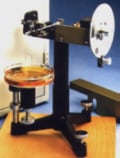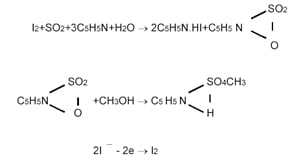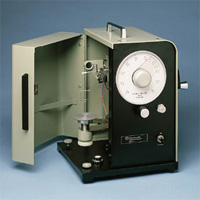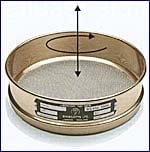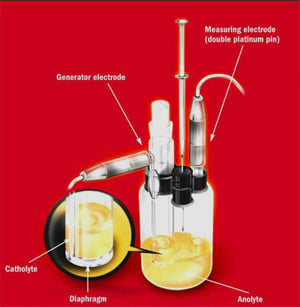Within the catalog of questions we are asked is a category related to Calibrating duNouy Ring Tensiometers. The subject matter ranges from how, why and what is proven?
I guess the immediate and wise-assed answers are:
Topics: duNouy Rings, Tensiometer, Surface Tension Measurement, Surface Tension, Calibration, Interfacial Tensiometer, Fisher Tensiomat, Liquid Properties
Karl Fischer Moisture – Answers to Questions We Get Asked
Posted by Art Gatenby on Jul 29, 2011 4:08:00 PM
When People are first introduced to the Karl Fischer Moisture Determination Method, eyes glaze over and we can perceive a mental “Why did I ask?”
If you have any history with moisture analysis, you will have found, that for some applications, the Karl Fischer Titration Method is the best and sometimes the only way to get an accurate moisture measurement.
Topics: Moisture Analysis, Karl Fischer, Karl Fischer Titration, karl fischer moisture, karl fischer moisture determination, karl fischer questions
Topics: duNouy Rings, Tensiometer, Surface Tension Measurement, Surface Tension, Interfacial Tensiometer, Fisher Tensiomat, Liquid Properties
The primary purpose of a sieve shaker is to provide motion to a sample in a test sieve.
An effective sieve shaker creates a motion that presents all the particles to all of the sieve openings and assists particles in passing through. This requires both rotary and vertical motion.
This process seems simple enough, but let's not be taken in.
Topics: Sieve Shakers, Particle Size Analysis, Sieve Testing, Sieves
You may recall that I promised to offer my interpretation as to how Surface Tension is related to Viscosity.
To begin with, liquid surface tension and viscosity share a common trait: they both involve properties of fluids. After that, things start to get murky.
Topics: Wilhelmy Plates, Viscosity, duNouy Rings, Tensiometer, Surface Tension Measurement, Surface Tension, Interfacial Tensiometer, Liquid Properties
Having Trouble Performing a duNouy Ring Test in Thick Samples?
Posted by Art Gatenby on Nov 15, 2010 3:29:00 PM
“My duNouy ring kept falling off the arm hook when attempting to immerse it into a high-viscosity sample.”
Topics: duNouy Rings, Surface Tension Measurement, Surface Tension, Interfacial Tensiometer, tensiometers, Liquid Properties
Is Particle-Size Analysis Boring? Trivial? Amazing? Exciting? Vital?
Posted by Art Gatenby on Nov 2, 2010 3:57:00 PM
When I tell people at cocktail parties that we specialize in Particle-Size Analysis. I usually get a polite response of ------ “OH !!,” which translates to “So who cares?”
Topics: Sonic Sifter, Particle Size Analysis, Sieves, Sieving Process
New ASTM E11-09 Sieve Standards — Exciting or Just Dull ???
Posted by Art Gatenby on Oct 6, 2009 5:42:00 PM
I have often ranted about the limited range of ASTM 11 sieve mesh standards as it relates to individual sieve certification. We at CSC have tried to help clearly distinguish between different levels of inspection and/or degrees of conformity. We outlined three levels of sieve certification. These are working sieves, mesh certified sieves and mid point sieves. There are summary definitions of these categories on the CSC Web site.
Topics: Sieve Shakers, Particle Size Analysis
In one of my more contemplative moments, I thought a bit of history about particle size analysis would be of interest. So let’s see Who Cares About Sieve Testing.
Topics: Sieve Shakers, Particle Size Analysis, test sieve equipment, sieve mesh
Karl Fischer Titration – Defined? or Over Simplified?
Posted by Art Gatenby on Jan 19, 2009 4:42:00 PM
Often I’m asked “What is Karl Fischer titration?” I’m always somewhat reticent to answer. If I can’t quickly change the subject I revert to a simple explanation, that even I (being somewhat challenged as a chemist) can understand. The explanation seems to help the novice understand Karl Fischer.
Read MoreTopics: Coulometric Karl Fischer, Volumetric Karl Fischer, Karl Fischer, Karl Fischer Titration, Moisture

